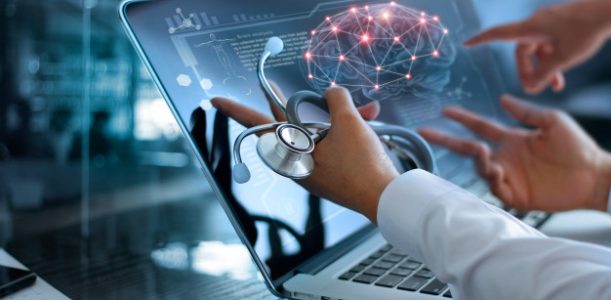How do the game information technology can be addictive? Features of neurobiological changes in GD (Gambling disorder) and IGD (Internet gaming disorder) relationship with clinical manifestations and comorbid psychopathology.
Introduction. GD (Gambling disorder) and IGD (Internet gaming disorder) are the only officially recognized behavioral addictions associated with game activity so far, but not with the use of psychoactive substances. Outwardly, such disorders look like a strong pathological attraction to the game that dominates all other needs with loss of control over game behavior that is why these addictions are called behavioral addictions. However, not in form, but in essence – they are informational and technological dependencies. They are the result of the interaction of information technology – the game – with the human mind. Today, the gaming industry is a multibillion-dollar business with billions of active users of different ages, among which people in the age range from 10 to 36 years old predominate. Information technologies for engagement and retention in the game are constantly being improved. As a result of this effect on the human mind and brain, the prevalence of GD and IGD exceeded the prevalence of all SUD combined.
Metods. This study examines how information technology can be addictive based on the results of numerous neurobiological and clinical studies and cases from our own clinical practice. It is investigated what structural, functional and neurochemical changes in the brain are correlates of the game dominant-the pathological drive to play prevailing over all other needs. The focus is on the neural correlates of compulsive gambling despite losses and negative psychosocial consequences, altered States of consciousness with impaired self-identification, emotional dysregulation, and emotional distress. It is these manifestations that contribute more to the formation of addiction and the subsequent development of comorbid psychopathology.
Neuropsychological studies show deficiencies in the decision- making, attention and working memory, like pathological gambling players as well as with Internet gaming disorder, as well as decrease the overall productivity inhibition control and cognitive flexibility. These disorders are similar to dysfunction in the frontal lobes, but without organic structural damage, as in SUD.
Cognitive or decision-making impulsivity (also termed impulsive choice). It was found that patients both with IGD and in PG showed precisely the impulsiveness of choice or cognitive impulsiveness that is reflected in the violation of decision-making. The studies have lower probabilistic discount rates than in the control group, which indicates disadvantageous decision-making in risky situations. Risky choice selection was associated with reduced activity in the inferior frontal and precentral gyrases of IGD patients compared to HCs, and in patients with a gambling disorder with altered VMPFC activity. Other studies have shown an increase in activity associated with assessment in the intra-dark groove and ventral striatum. The results of fMRI (fMRI) and neuropsychological tasks indicate that both patients with IGD and GD are characterized by poor risk assessment and decision making in risky situations.
Compulsiveness. According to the results of scientific research, we observe a pronounced obsession with game behavior, with impaired cognitive flexibility, which, according to some studies, is superior in strength to compulsivity in SUD (in AUD in particular). However, compulsiveness in GD and IGD is a particular manifestation of dependence, as it is associated with aberrant reward-based learning. Brain networks involved in obsessive behavior and were located in following studies:
– using tasks on reversal learning (DLPFC, lateral OFC, and caudate nucleus)
– task switching (basal ganglia, in conjunction with the prefrontal cortex) and
– habit learning (supplementary motor area, premotor area, and putamen).
Changes of the mesocorticolimbic reward system. Neurobiological studies have found that changes in executive functions, impulsive choice with the inability to postpone pleasure, impaired decision – making with increased risk, and even deliberately losing options, cognitive rigidity with compulsive repetition of self-destructive, inappropriate, template behavior without taking into account feedback, are associated with aberrant learning of the reward system. Decreased activation is found in brain structures associated with the mesocorticolimbic reward system: that is, hyporeactivity when losing and ambiguous reaction to winnings (then hypo-, then hyperreactivity), but definitely hyperreactivity in response to stimuli associated with the game. Thus, participation in the game becomes the only significant reward.
Neurobiological studies of altered states of consciousness (ASC) during the game (flow state, dark flow state) note changes in the EEG characteristic of the trance or hypnosis state. Neuroimaging studies (fMRI) confirm that addicted Internet gamers exhibit increased activation in brain regions such as the angular gyrus (AG), inferior frontal gyrus (IFG), precuneus, and in the medial prefrontal cortex (MPFC), during avatar reflection compared to self-reflection and correlation with the severity of symptoms. Based on this, it was concluded that the stronger the player’s identification with the avatar, the heavier the dependence. The study also discusses gaming technologies that promote immersion in an altered state of consciousness, which contributes to the development of addiction.
Emotional dysregulation and stress in GD and IGD. Morphometric studies have shown that IGD and GD are associated with structural abnormalities in gray matter (GM), such as decreased gray matter volume (GMV) in the frontal, cingulate, insular, parietal cortex, amygdala and hippocampus. In the same zones, a decrease in the volume of gray matter is found in post-traumatic stress syndrome as a result of severe chronic distress and depression. A decrease in the volume of gray matter in these areas of the brain is observed due to the debilitating effect on the Central nervous system of chronic distress. Indicators of experienced distress are functional and structural changes in the brain, vegetative shifts, changes in the secretion of hormones of the hypatoadrenal system and neurotransmitters: cortisol, norepinephrine, and epinephrine. All this we observe in patients with IGD and GD.
As a result, all the above-mentioned neurobiological and clinical changes create conditions for the development of comorbid psychopathology or increasing the severity of symptoms of already present mental disorders.


